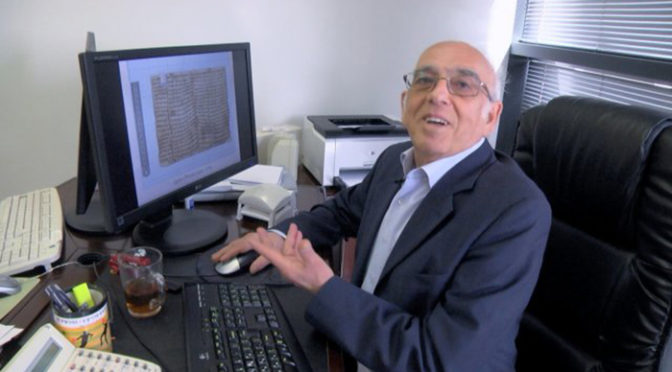Michelle Paymar’s fascinating documentary FROM CAIRO TO THE CLOUD tells the extraordinary story of the discovery and significance of the Cairo Genizah, the largest cache of ancient Jewish texts yet discovered, which spans a thousand years of history. It is a story of archaeological discovery and of social history, of religious belief and humanism, of outsiders and pioneers, and at its heart, people.
It starts with the ‘Westminster Sisters’, Agnes Lewis & Margaret Gibson, two formidable Scottish Presbyterian women, who travelled the near east in the second half of the 19th century in search of ancient documents. Today their legacy is incalculable. They alert another outsider, Solomon Schechter, the first Jewish lecturer appointed to Cambridge University, to some texts acquired in Cairo. He quickly realises the significance of these documents – a ‘lost’ Hebrew text of the ‘Sirach’, suspected by some scholars to exist but never proven. Thus begins an odyssey to Cairo, where he will gain access to the Genizah and 300,000 ancient texts which reveal the daily lives of Jews, Christians and Muslims alike, including the voices of women and children. The film details the significance of this discovery as a historical artefact, that significance being the mundane, day to day life documented by the people then. The texts shed light on the past in a way officially recorded documentation can never to.
The word “Ginizah” comes from the Hebrew route meaning ‘hiding’, where documents containing the word of God or religious themes are put (thrown) when finished with, before they can be buried in the Jewish tradition. In the Cairo Genizah they have kept not just religious offerings but everything, and it is this irony that sheds light on the past, bringing the documents very much out of hiding. They tell the story, in vivid colour, of the people of North Africa, living in harmony a thousand years ago. These people are not a different: they are the same as us, with a set of rules and concerns that make sense to them in the time that they inhabit. There are doodles from children, and lines, presumably as a punishment from a teacher to a child; what did he do we wonder? There are letters from women, who have strong voices in the community; there is heartbreak and there is the routine; there are texts in Arabic, Hebrew and even Yiddish.
Paymar brings all this to life with some crisp editing and a well-paced narrative that takes us from Victorian Cambridge right into the 21st century, where the power of the internet brings together the fragments from the Cairo Ginizah which were scattered across the globe. It is meticulously researched, with a cast of engaging experts who enlighten and entertain this extraordinary story. Anyone with a passing interest in history will find all this enthralling. As one expert in the film points out, “It is like looking back at that time through the memory of God”. If that is not enough to pique an interest, I don’t know what is.

